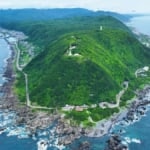Name: Khajuraho Group of Monuments
Address: Khajuraho
Official/Related Site URL: http://whc.unesco.org/en/list/240/
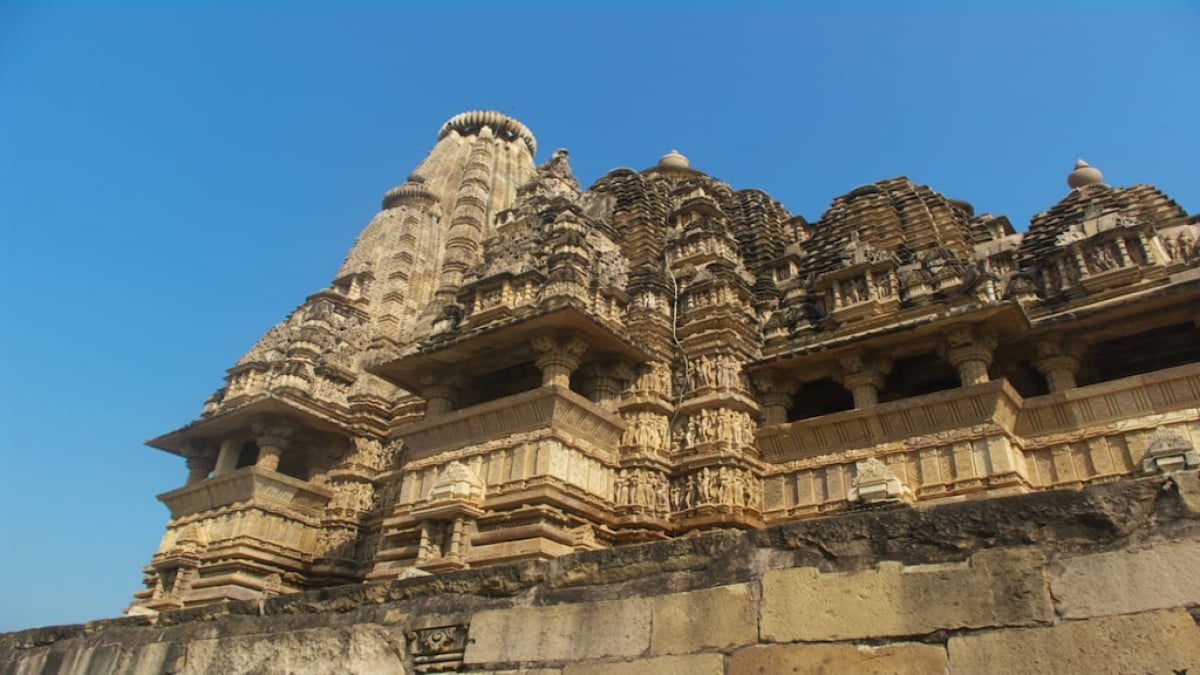
The Pinnacle of Eroticism! The World Heritage Site of Khajuraho, India
Khajuraho is a small town located in the state of Madhya Pradesh, India. It sits slightly north of the center of India and its name means “City of Date Palms.”
The UNESCO World Heritage Site “Monuments of Khajuraho” in this town comprises a group of temples built by the Chandela dynasty, which flourished from the 10th to the 12th century. These temples are adorned with sculptures that depict a world of sensuality, making them a uniquely erotic World Heritage Site. Let’s take a closer look at the monuments of Khajuraho.
table of contents
[x] close
The Pinnacle of Eroticism! The World Heritage Site of Khajuraho, India
What Is the Khajuraho Group of Monuments?
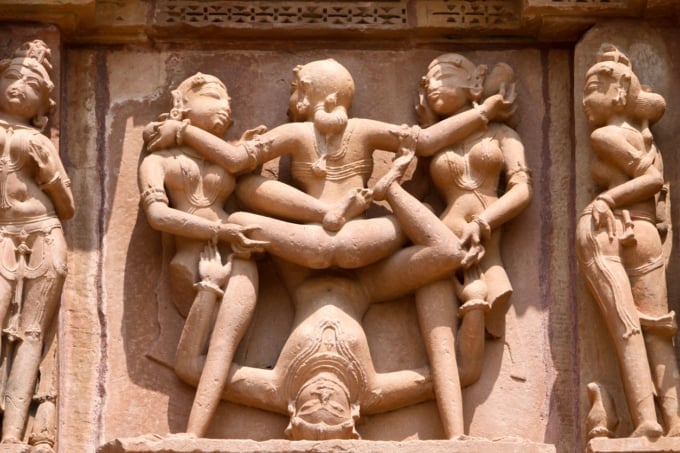
Khajuraho, home to the World Heritage site, was a religious center of the Chandela dynasty. Numerous Hindu temples built during this period were collectively registered as a World Heritage Site in 1986 under the name “Khajuraho Group of Monuments.”
In the 14th century, the region was invaded by Islamic forces, and the majority of the temples were destroyed by Muslims who prohibited idolatry. Today, 25 temples remain and are divided into three zones: the Western Group, the Eastern Group, and the Southern Group.
The most striking feature of this World Heritage Site is its sensual sculptures. Everywhere you look, you will find mithuna statues—depictions of sexual union between men and women. These temples, filled to the brim with ultimate eroticism, are overwhelming in their artistry. They offer valuable insight into the diversity of religious beliefs held by people at the time.
Access to the Khajuraho Group of Monuments
You can reach the World Heritage Khajuraho Group of Monuments by plane or train.
For air travel, use Khajuraho Airport. There are direct train services from Delhi and Agra. A train leaving Delhi around 8 PM will arrive at Khajuraho Station, the closest station to the World Heritage site, just after 6 AM the following morning. Train schedules may change, so checking in advance is recommended.
The station is about 8 km from the town center, so shared taxis or auto-rickshaws are a convenient option.
The area around the Western Group of temples has many hotels, restaurants, and souvenir shops, as well as bicycle rental shops and the India Tourism Office. There are also walking tours organized by the tourism office, and joining one of these for a guided explanation is highly recommended.
Recommended Highlights of the Khajuraho Group of Monuments (1): Western Group of Temples
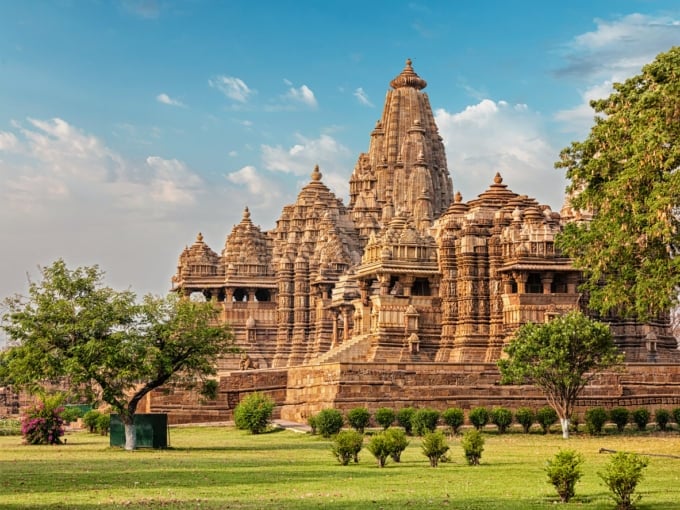
The most notable highlight of the Khajuraho Group of Monuments World Heritage Site is undoubtedly the Western Group—the largest area. Within this well-maintained plaza are numerous well-preserved Hindu temples, where you can view many mithuna statues.
The Kandariya Mahadeva Temple, which exceeds 30 meters in height, enshrines the god Shiva. Along with abundant mithuna carvings, it reflects the exceptional architectural standards of the Chandela dynasty. The temple's tower, called shikhara, is composed of multiple large and small spires, and its detailed ornamentation is astonishing for something built in the 11th century. The Devi Jagadambi Temple, considered the most erotic of them all, features a depiction of the couple Shiva and his wife Parvati.
Also located in the Western Group is the Matangeshwar Temple, which is still in active use today. This area is best enjoyed by taking your time to leisurely explore each temple.
Recommended Highlights of the Khajuraho Group of Monuments (2): Eastern and Southern Groups of Temples
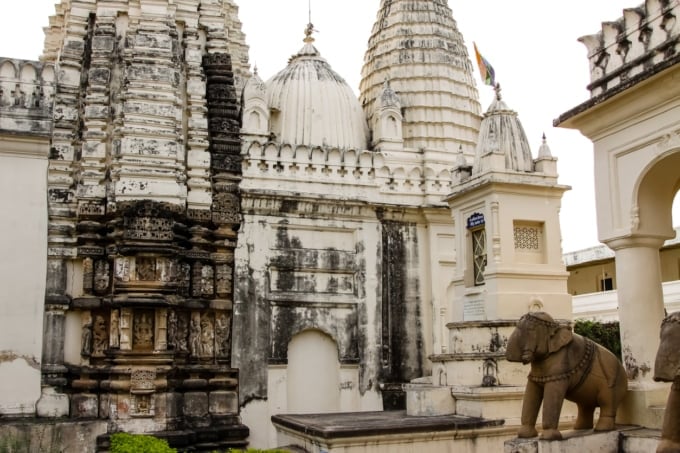
The World Heritage-listed Khajuraho Group of Monuments also includes the Eastern and Southern Groups, and while they are a bit farther apart, they are well worth visiting. The Eastern Group is home to many Jain temples, revealing the religious tolerance of the time—even though the ruling dynasty was Hindu. While there are fewer mithuna carvings compared to the Western Group, the intricate decorations are exquisite, and the ruins have a serene and peaceful ambiance.
The Southern Group has a different character altogether. The Duladeo Temple houses beautiful statues of celestial maidens, or apsaras. As the Southern Group’s temples are more spread out, it’s advisable to charter a rickshaw to explore the area comfortably.
◎ Summary
This has been an introduction to the Khajuraho Group of Monuments, a UNESCO World Heritage Site in India. In Khajuraho, all eyes are naturally drawn to the alluring mithuna statues. In truth, there are various theories as to why so many of these sensual sculptures were created, and the full explanation remains unclear. However, since ancient times, procreation has been essential for prosperity, and the vibrant force of life has naturally been a subject of reverence. These ideas took shape in the form of mithuna statues, which are considered a significant element of this World Heritage Site.
RELATED ARTICLES
REGIONS
CATEGORIES
FEATURED ON India
-

India is a Treasure Trove of Souvenirs! 4 Best Must-Buy Items in Kolkata
-

Enjoy Sightseeing in Shillong, India! 8 Recommended Tourist Spots!
-

Recommended Souvenirs from the Resort Destination of Goa, India!
-
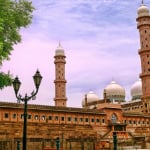
5 must-see tourist spots in Bhopal! Visit Asia’s largest and most striking mosque
-

Miraculous Landscapes! Quartz-White Deserts & Other Wonders: 4 Must-See Tourist Spots in Bhuj, India
MOST POPULAR ON India
-
 1
1Doha: Must-see Attractions in the Capital of Qatar
-
 2
2Toronto: 10 Things to do in this Picturesque Canadian City
-
 3
3Amarillo: A City Famous for It’s Amazing Canyons, Great History and Music
-
 4
4South Korea: Dazzling Scenery, Rich Culture and Fascinating History
-
 5
5Kuwait: A Country in Middle East Asia Famous for Hot Sand Dunes and Stunning Cityscape


